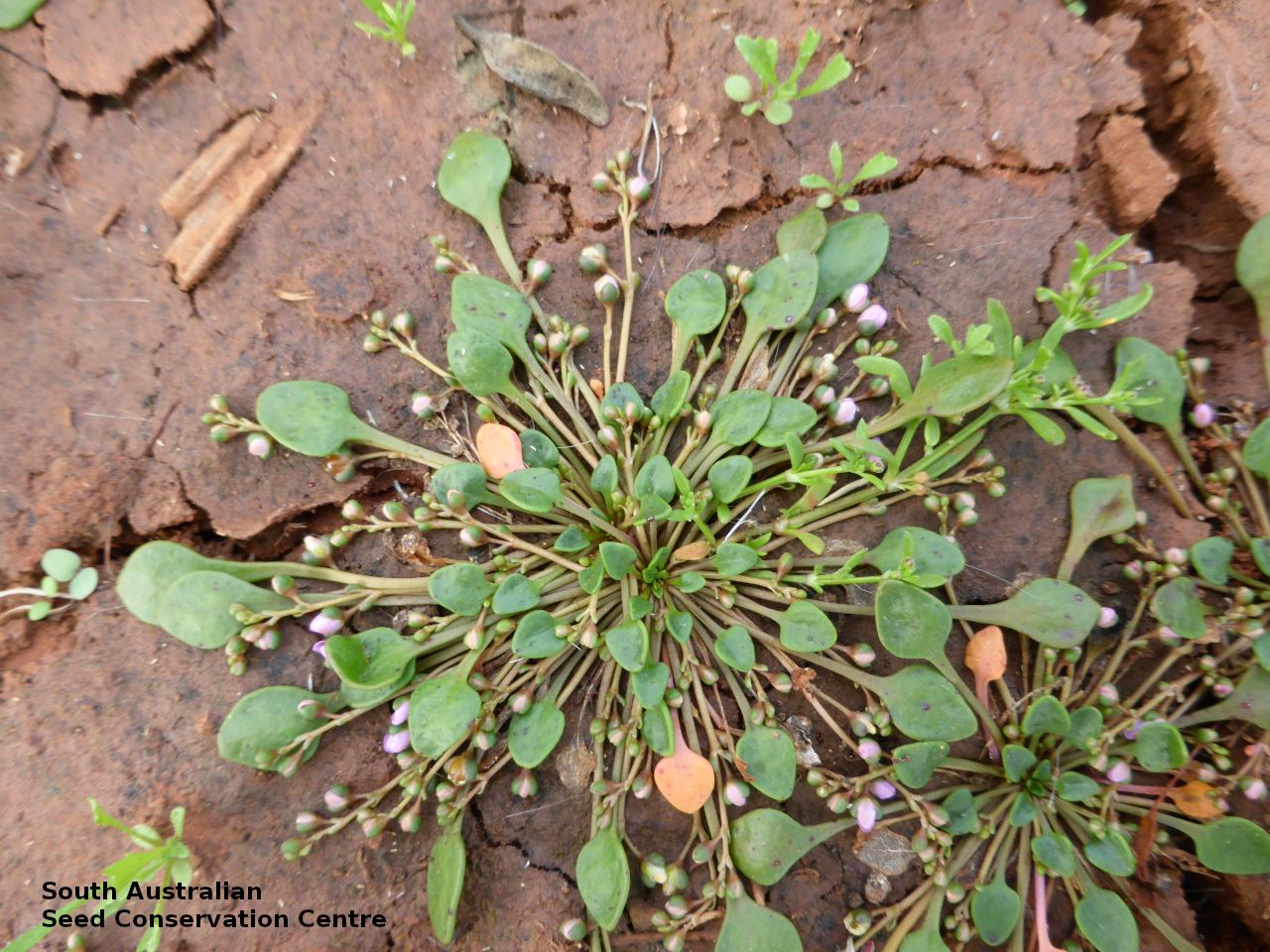
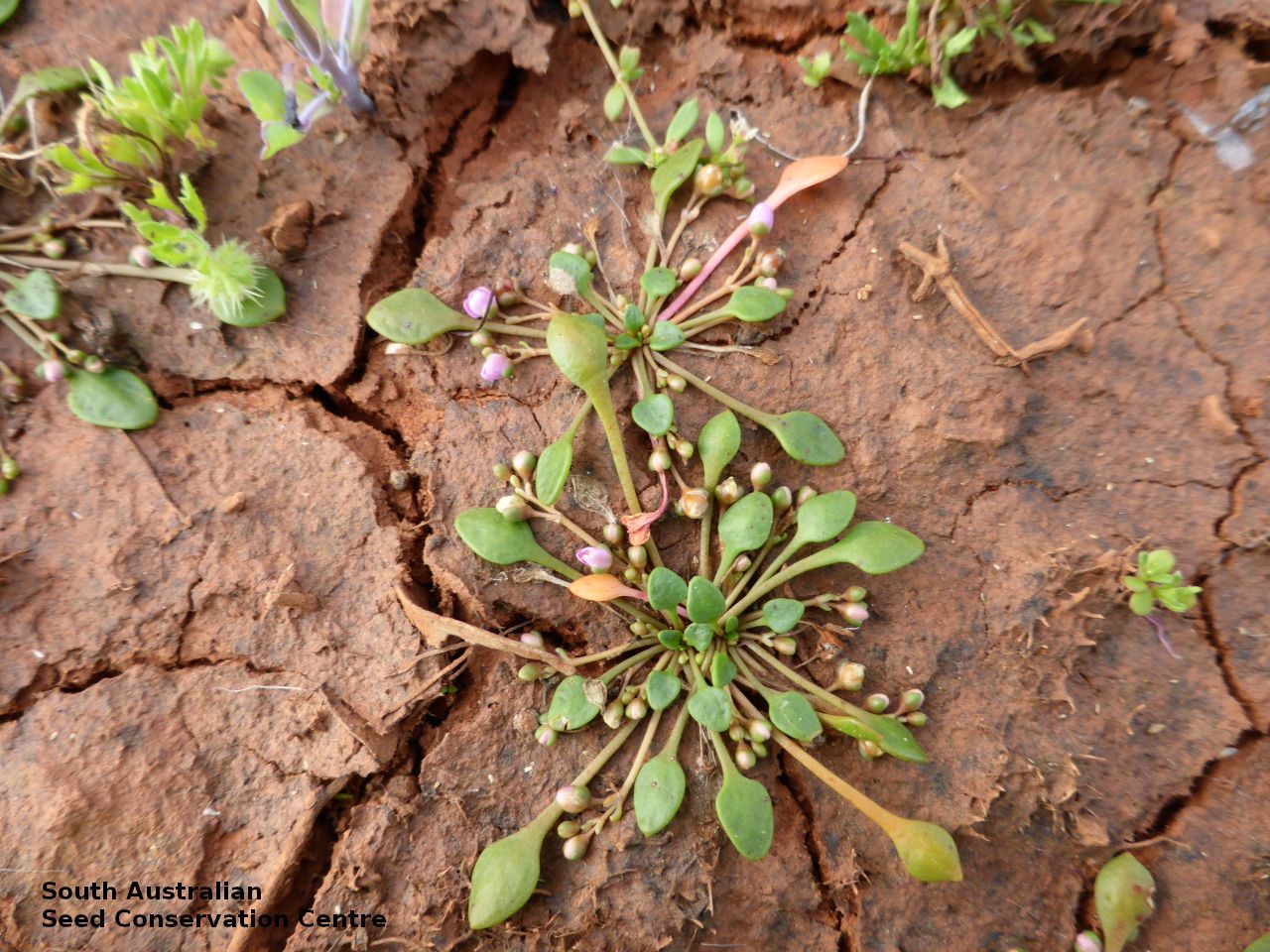
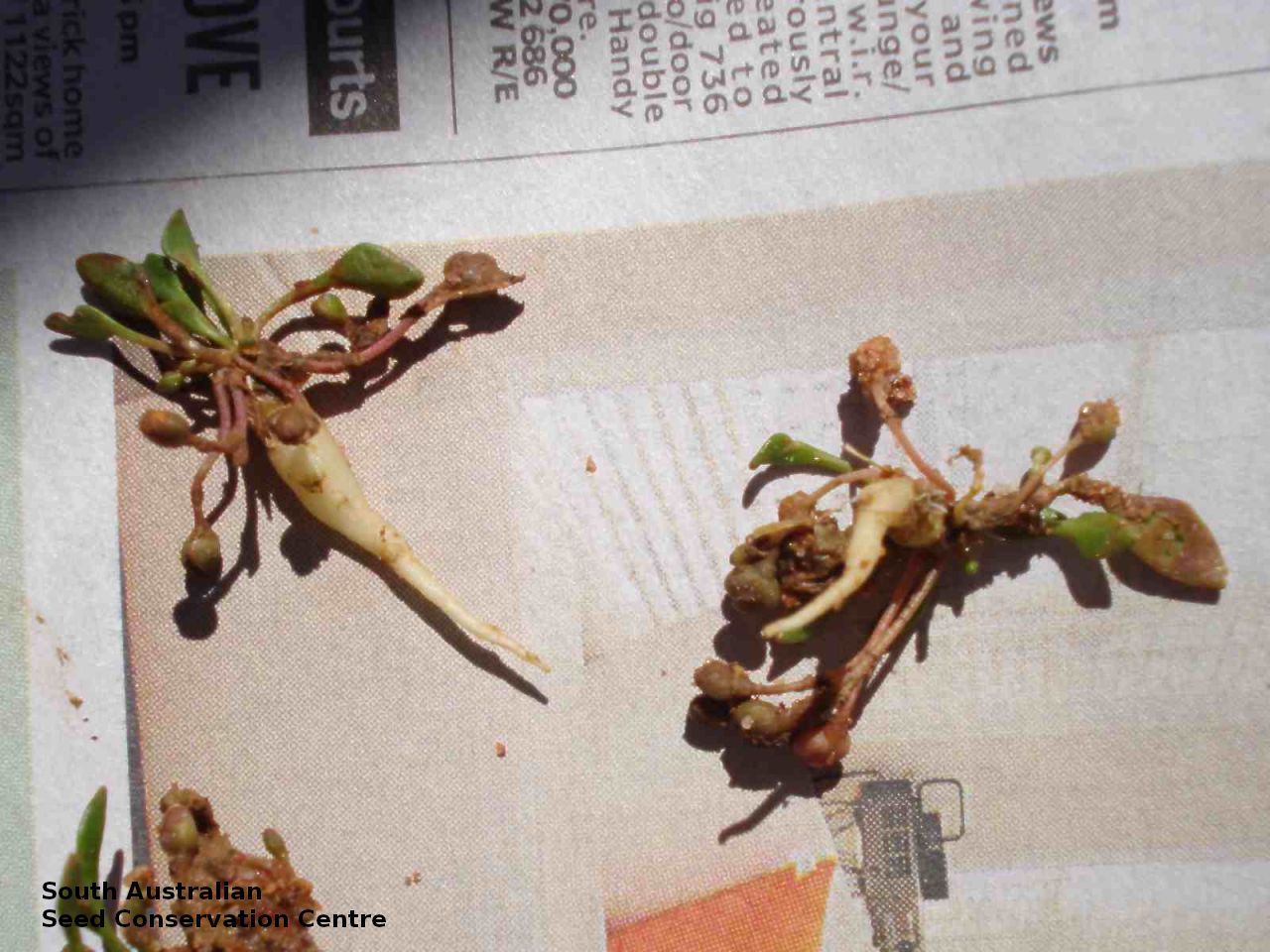
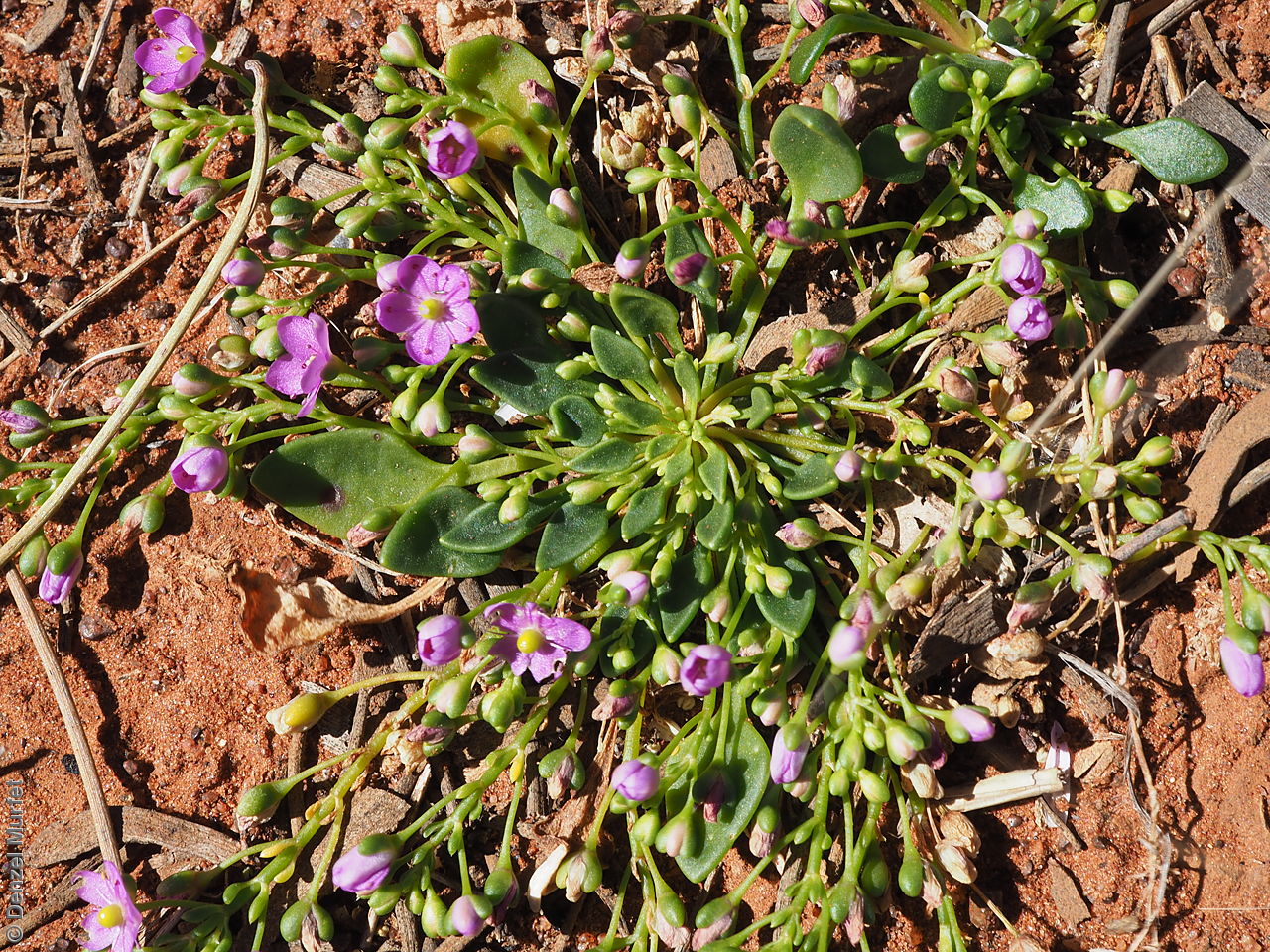
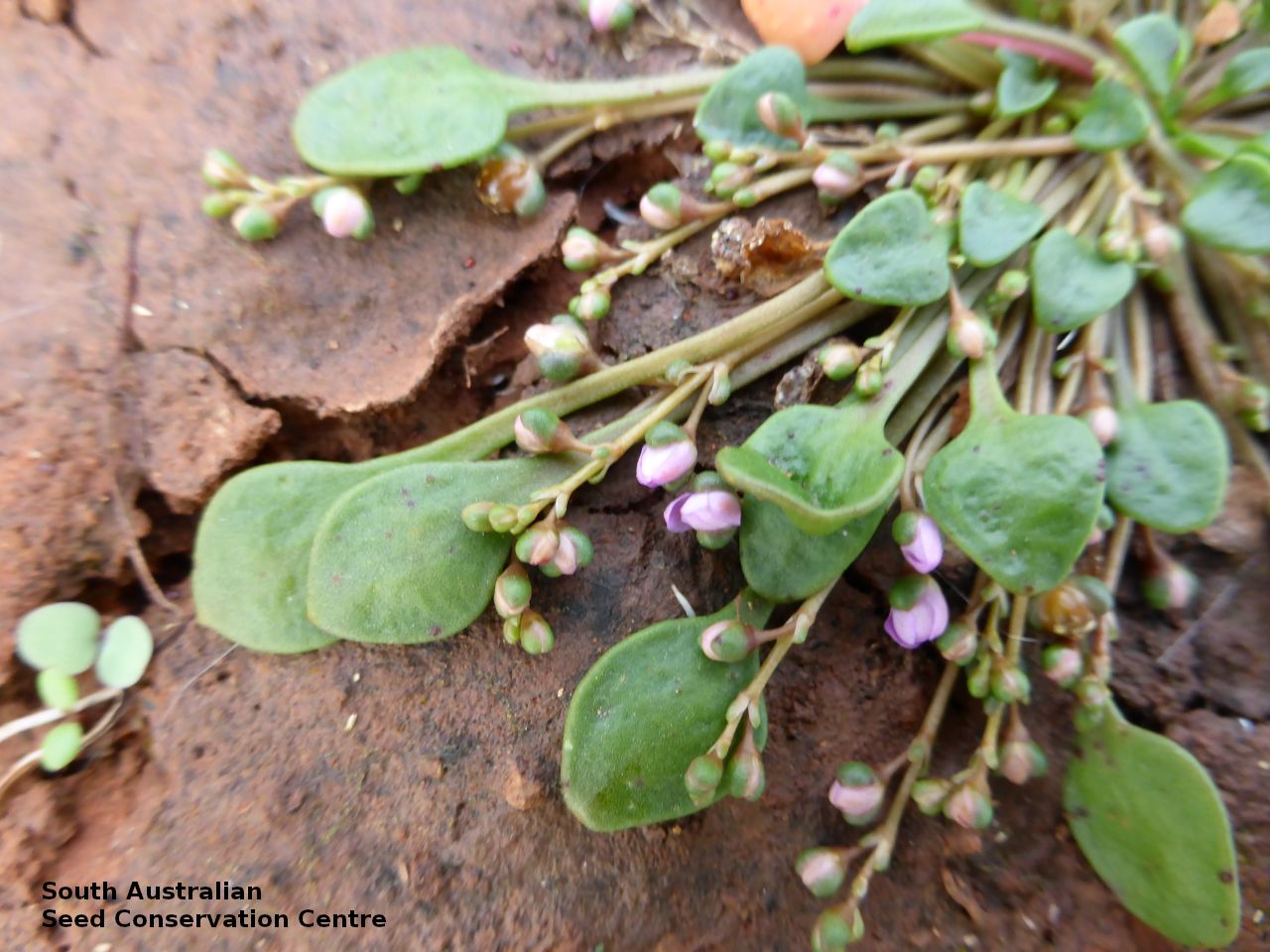
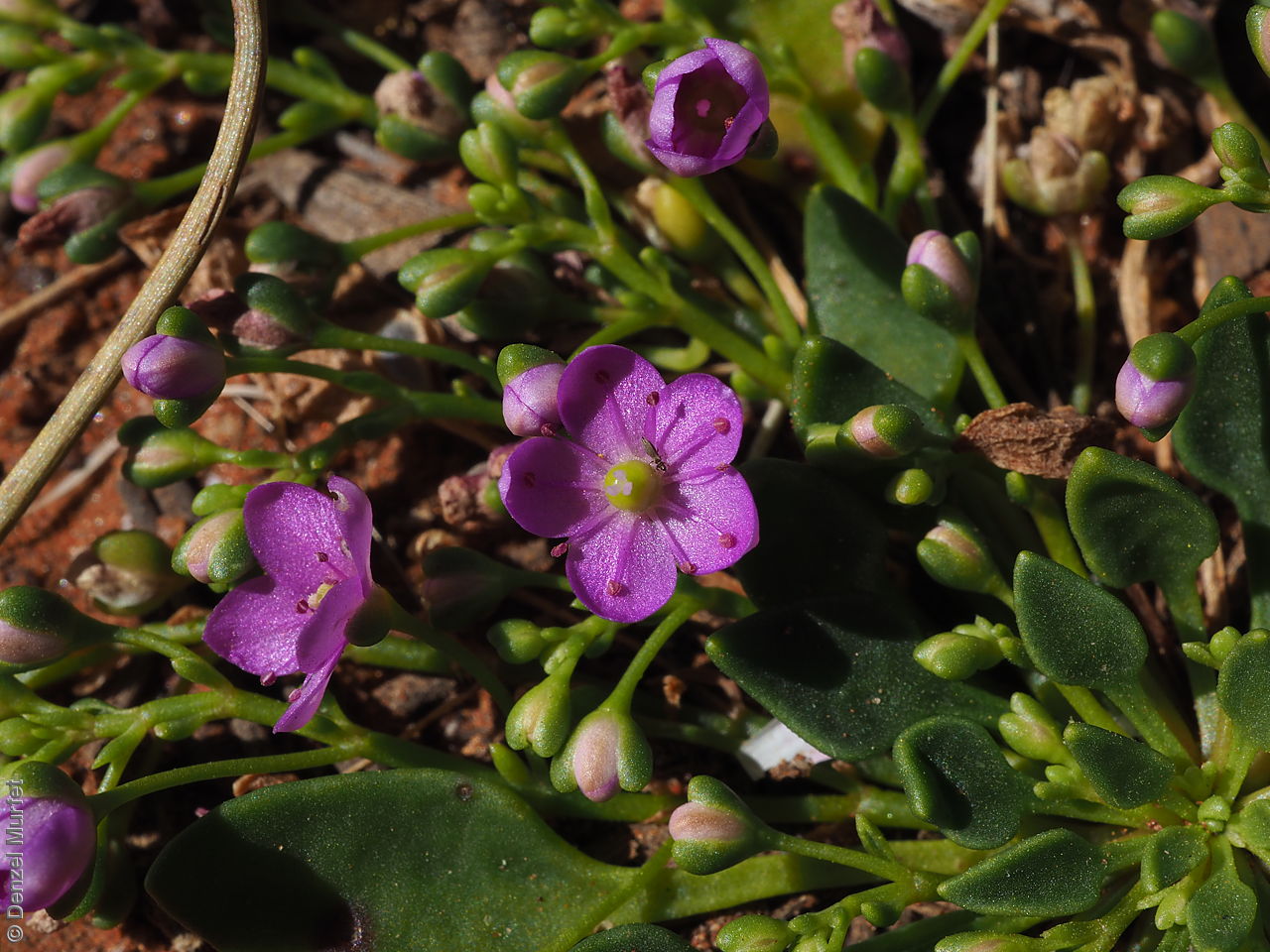
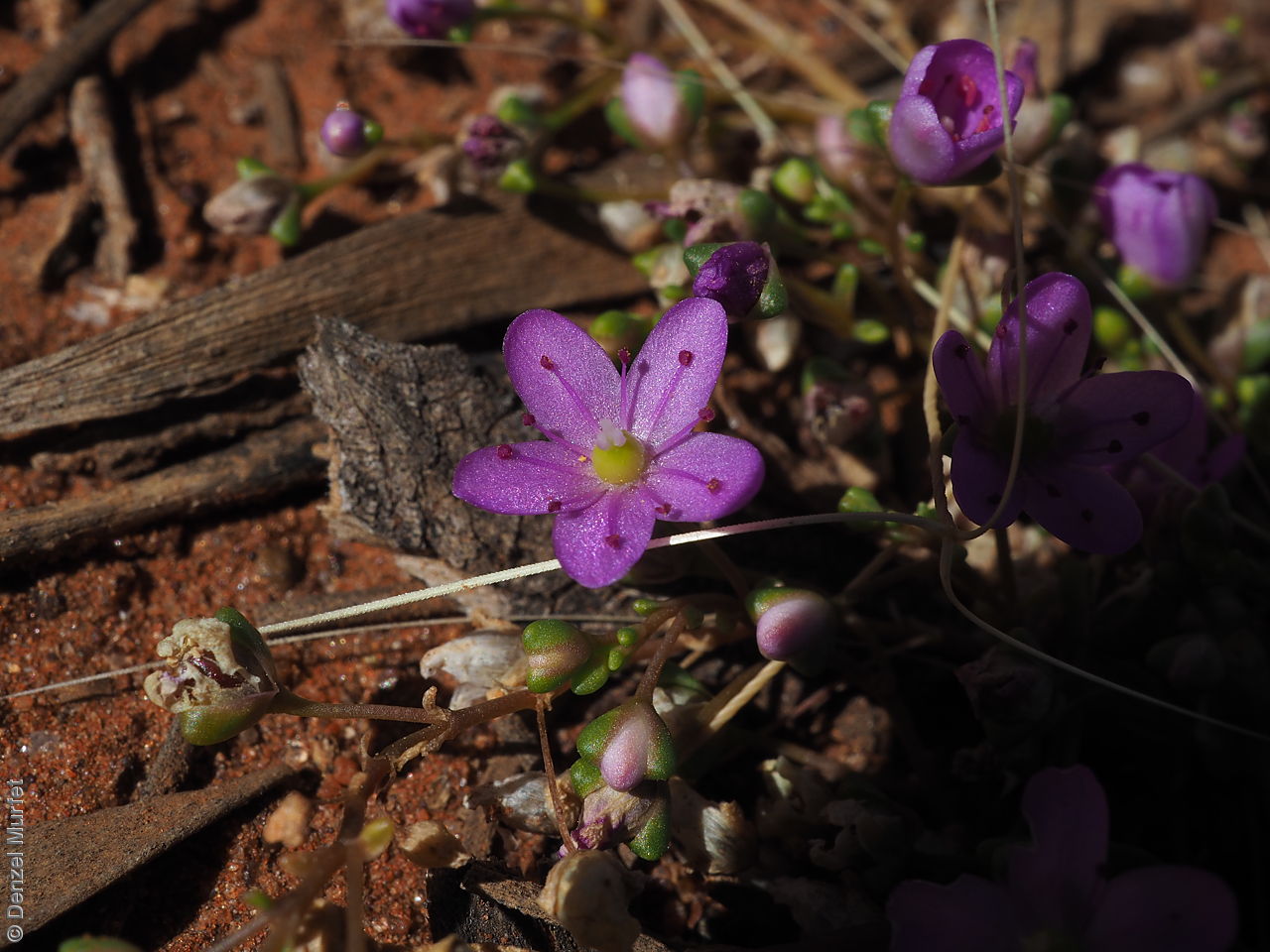
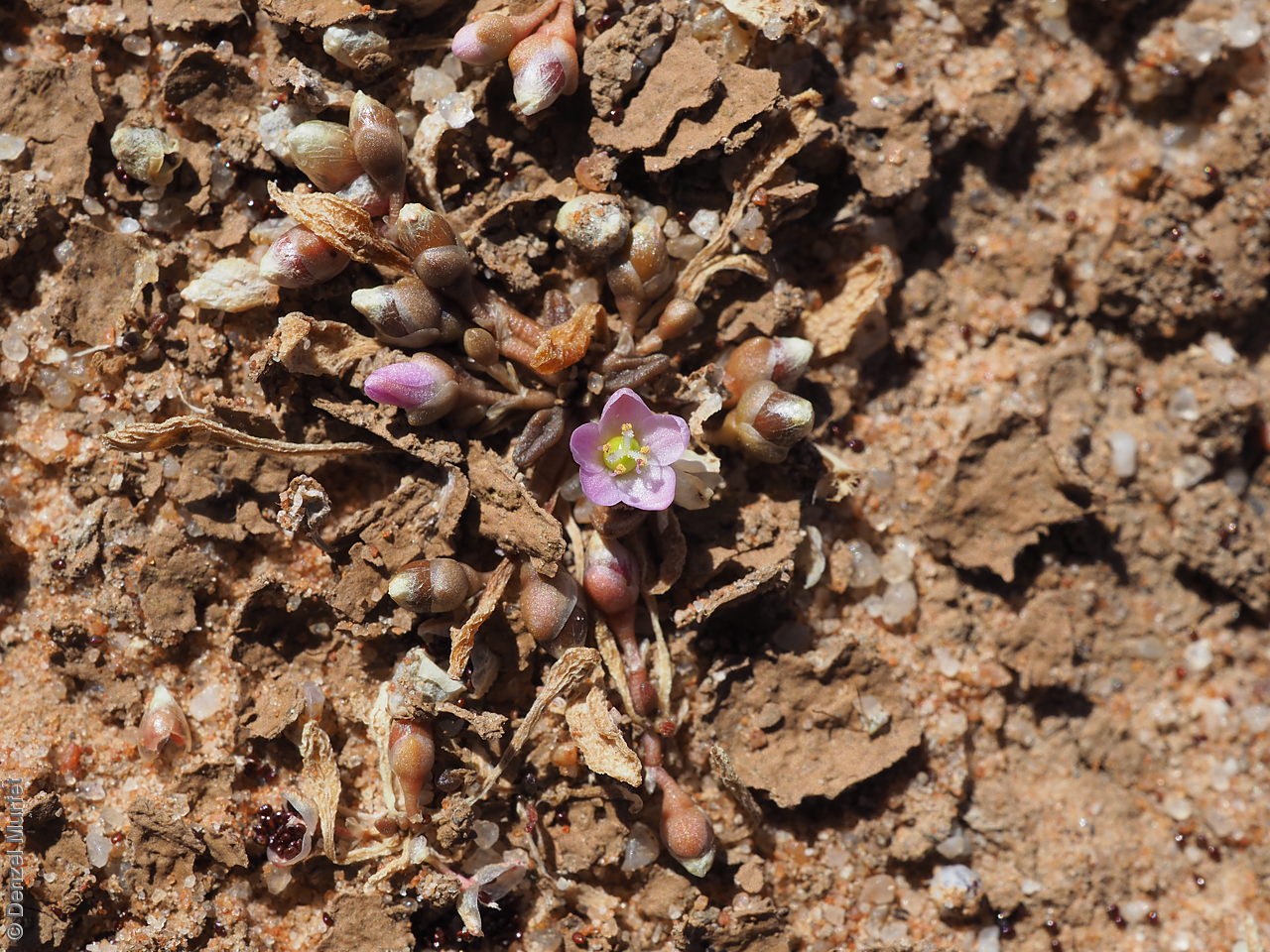
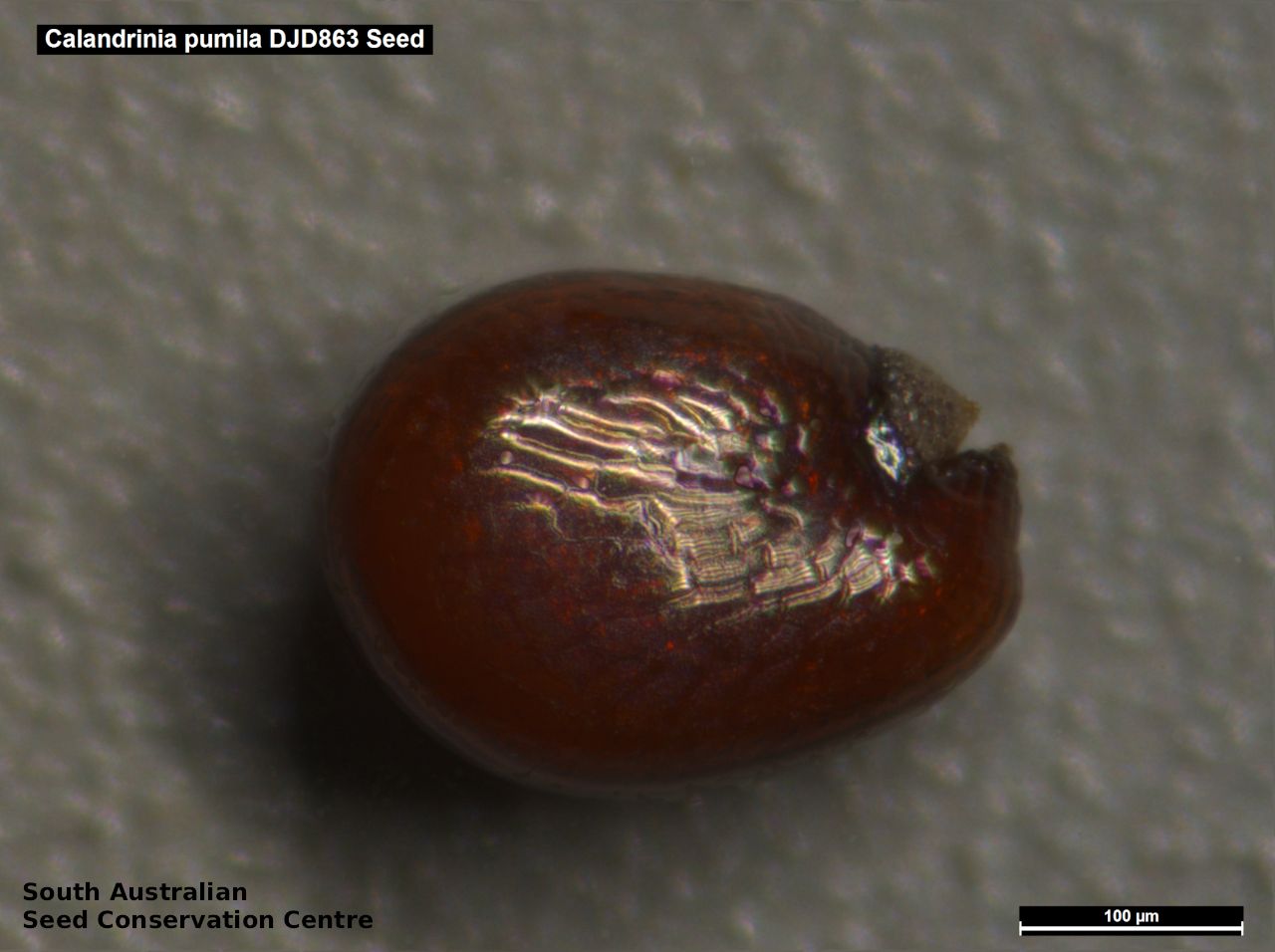
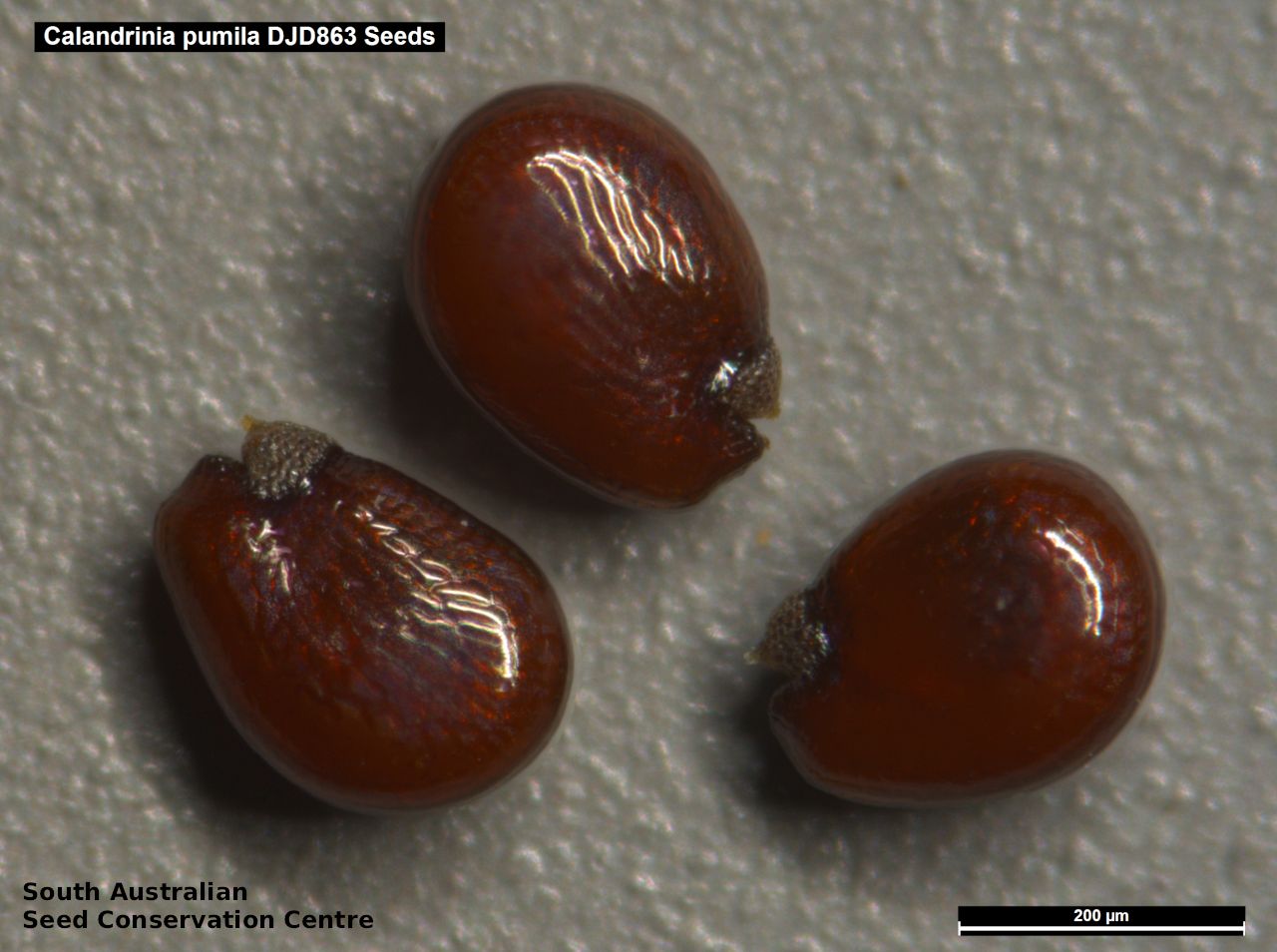
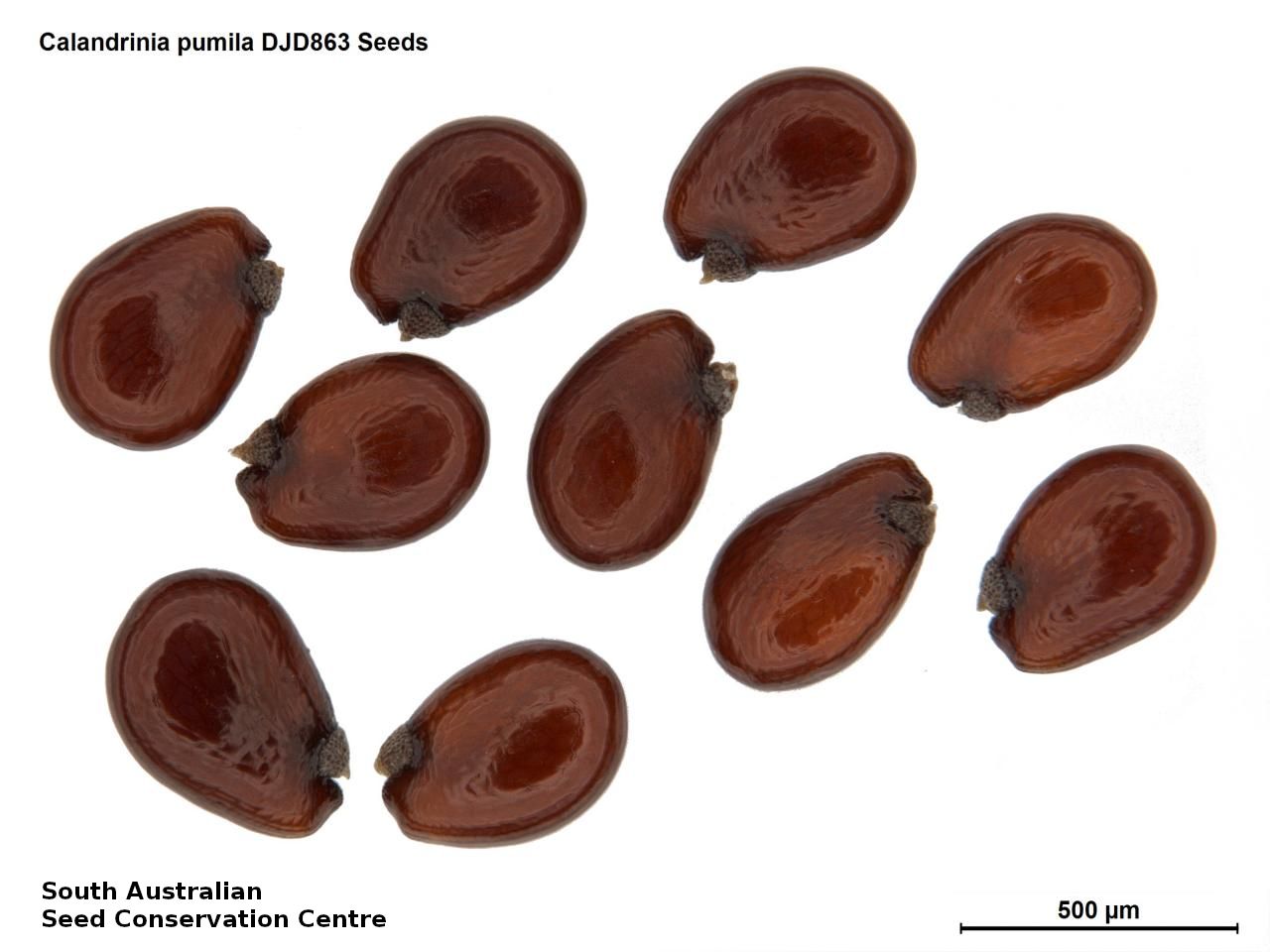

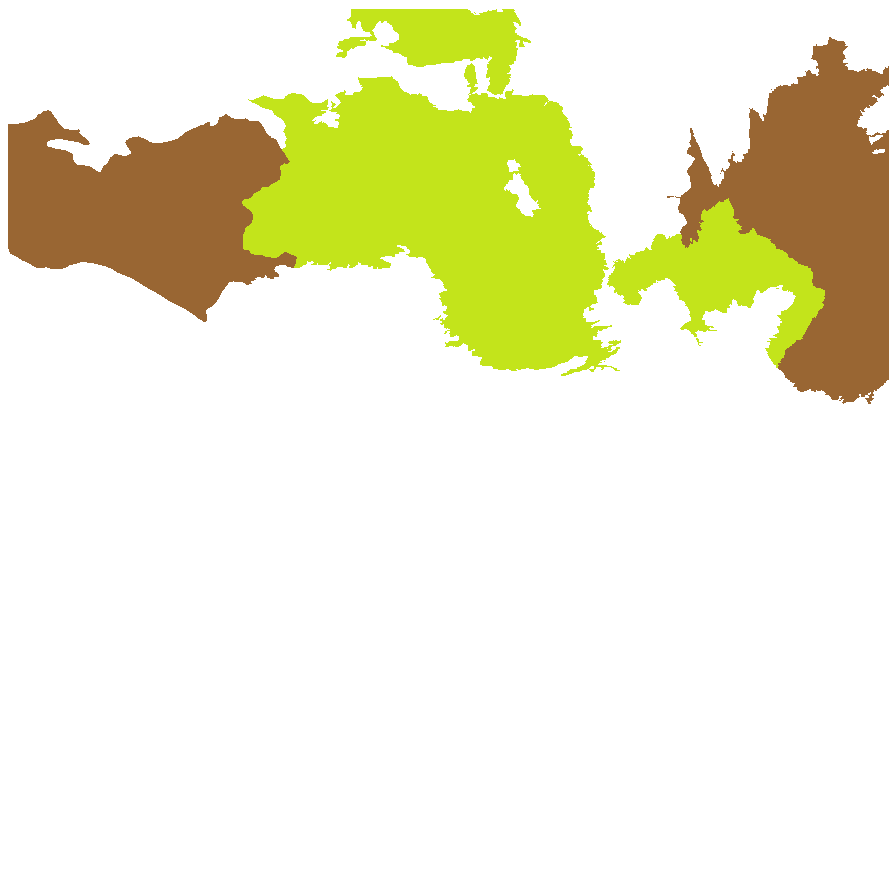
Botanical art
Prior names
Parakeelya pumila
Calandrinia calyptrata var. pumila
Etymology
Calandrinia named after Jean-Louis Calandrini (1703-1758), a Swiss scientist, professor of mathematics and philosophy. Pumila from the Latin 'pumilio' meaning dwarf, referring to its habit.
Distribution and status
Found scattered across the northern part of South Australia growing on red and clay soils in open clay pans. Also found in Western Australia, Northern Territory, Queensland and New South Wales. Native. Common in South Australia. Common in the other States.
Herbarium regions: North Western, Lake Eyre
NRM regions: Alinytjara Wilurara, South Australian Arid Lands
AVH map: SA distribution map (external link)
Plant description
Prostrate annual herb with thickened tap root and stems to 10 cm long. Basal leaves radical, petiolate, spathulate or narrow-obovate to 12 mm long and 8 mm wide. Inflorescence loose panicles with tiny pink flowers. Flowering between May and September.
Capsule globose, circumciss, 3-valved from the base, 2.6-3.5 mm long, exceeding the spreading sepals; seeds numerous, obovoid, red-brown, shiny, smooth-colliculate, 0.4-0.5 mm long, c. 0.3 mm wide. Fruits are red-brown globular capsule to 3.5 mm long with 3 valves. Seeds are shiny red-brown reniform-ovoid seed to 0.5 mm long and 0.2 mm wide with a smooth surface. Seed embryo type is peripheral.
Seed collection and propagation
Collect seeds between March and November. Collect mature capsules that are turning red-brown colour and contain dark seeds. Place the capsules in a tray and leave to dry for one to two weeks. Then rub the capsules gently by hand to dislodge the seeds. Use a sieve to separate the unwanted material. Store the seeds with a desiccant such as dried silica beads or dry rice, in an air tight container in a cool and dry place. From two collections, the seed viability was high, ranging from 90% to 100%.
| Location | No. of seeds (weight grams) | Number of plants | Date collected | Collection number Collection location | Date stored | % Viability | Storage temperature |
|---|---|---|---|---|---|---|---|
| BGA | 90,800 (3.92 g) | 100 | 12-Mar-2007 | RJB70943 Gairdner-Torrens | 1-Aug-2007 | 90% | -18°C |
| BGA | 117,700 (2.59 g) | 30+ | 25-Sep-2007 | DJD863 Lake Eyre | 19-Sep-2008 | 100% | -18°C |
Number of plants: This is the number of plants from which the seeds were collected.
Collection location: The Herbarium of South Australia's region name.
% Viability: Percentage of filled healthy seeds determined by a cut test or x-ray.